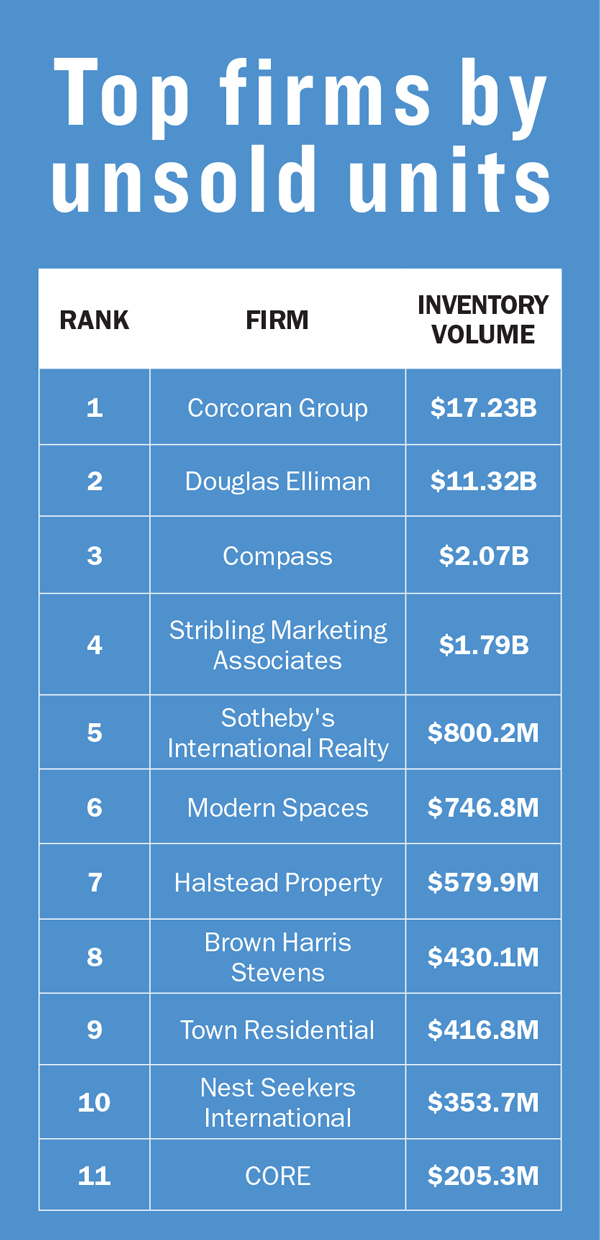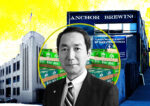Trending
These new dev marketing firms have the most unsold inventory
Corcoran leads the pack with $17B in unsold condos

Despite New York’s softening new development market, the brokerages that made the cut on our pipeline ranking, which includes all active listings, in-contract deals and so-called shadow inventory — units that have been assigned to firms but have not yet hit the market — have a combined $35.94 billion worth of condos to sell.
The divide is even more stark when looking at unsold inventory, where the two firms the Corcoran Group and Douglas Elliman snagged 80 percent of the total. As of June 29, they respectively had $17.23 billion and $11.32 billion in unsold units.
In a telling sign, Compass took the No. 3 spot for unsold inventory with $2.07 billion worth of units, suggesting that the young firm is making inroads into this rarefied sector of the residential market.
The upstart brokerage was followed by Stribling at No. 4 (with $1.79 billion worth of pipeline units) and Sotheby’s at No. 5 (with $800.2 million).
Sotheby’s International placed fifth with $800.2 million in revenue. It was followed by Modern Spaces ($746.8 million), Halstead Property ($579.9 million), Brown Harris Stevens ($430.1 million), Town Residential ($416.8 million), Nest Seekers International ($353.7 million) and CORE ($205.3 million).
It’s clear no new development marketing firm can get too comfortable in this market. That’s because more often than not, the firm hired at the outset doesn’t make it to the finish line.
Gary Malin, president of Citi Habitats — which has the same parent company as Corcoran and did not make the ranking — said buyers “are more willing to take a wait-and-see approach” considering the surge in new supply.
Due to the “much more challenging market,” brokerages are locked in severe competition to sell condos in new and often uncompleted buildings, Compass’ Leonard Steinberg noted.
Susan de França, who heads Douglas Elliman Development Marketing, said, “the competition between new-development marketing firms has always been strong in New York, but when the market changes it does tend to narrow the field.”
— Research by Ashley McHugh-Chiappone, Harunobu Coryne and Yoryi De La Rosa




